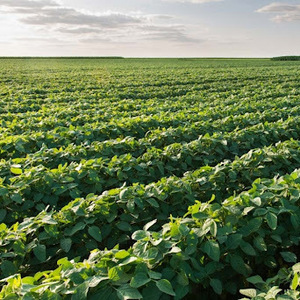USDA predicts 2% decline in 2023 soybean crop

August 11, 2023
BY Erin Krueger
USDA’s National Agricultural Statistics Service released its latest Crop Production report on Aug. 11, predicting 2023 soybean crop will be down 2 percent when compared to last year, with production forecast at 4.21 billion bushels.
Soybean yields for 2023 are expected to average 50.9 bushels per acre, up 1.4 bushels when compared to last year. If realized, the forecasted yields in Arkansas, Indiana, Mississippi, North Carolina, Ohio and South Carnolia will be record highs.
Areas harvested for beans in the U.S. is forecast at 82.7 million acres, unchanged from the agency’s previous forecast, but down 4 percent from 2022.
Advertisement
Advertisement
Related Stories
The U.S. EPA on July 8 hosted virtual public hearing to gather input on the agency’s recently released proposed rule to set 2026 and 2027 RFS RVOs. Members of the biofuel industry were among those to offer testimony during the event.
The USDA’s Risk Management Agency is implementing multiple changes to the Camelina pilot insurance program for the 2026 and succeeding crop years. The changes will expand coverage options and provide greater flexibility for producers.
The USDA’s National Agricultural Statistics Service on June 30 released its annual Acreage report, estimating that 83.4 million acres of soybeans have been planted in the U.S. this year, down 4% when compared to 2024.
SAF Magazine and the Commercial Aviation Alternative Fuels Initiative announced the preliminary agenda for the North American SAF Conference and Expo, being held Sept. 22-24 at the Minneapolis Convention Center in Minneapolis, Minnesota.
Scientists at ORNL have developed a first-ever method of detecting ribonucleic acid, or RNA, inside plant cells using a technique that results in a visible fluorescent signal. The technology could help develop hardier bioenergy and food crops.
Upcoming Events










